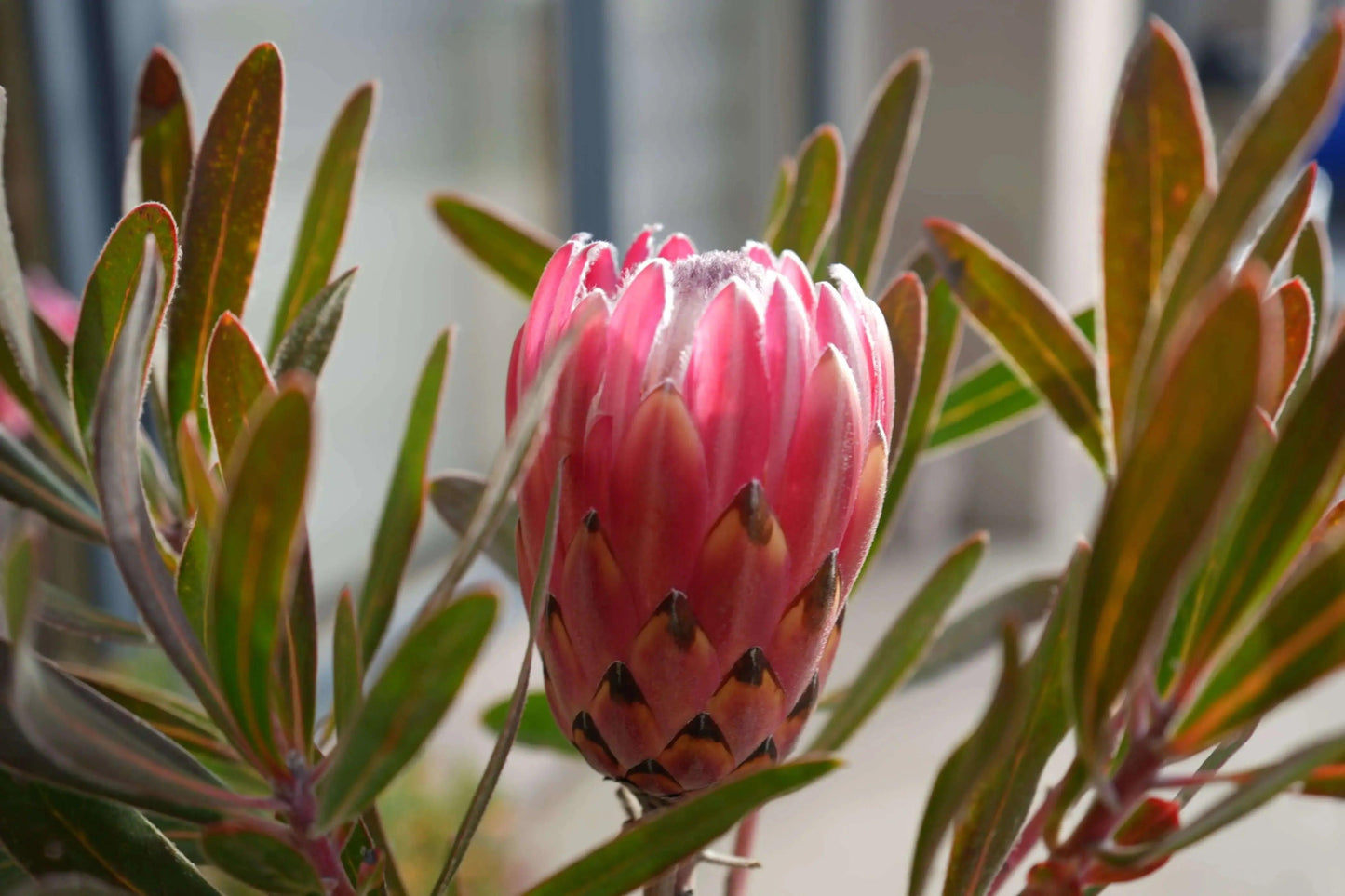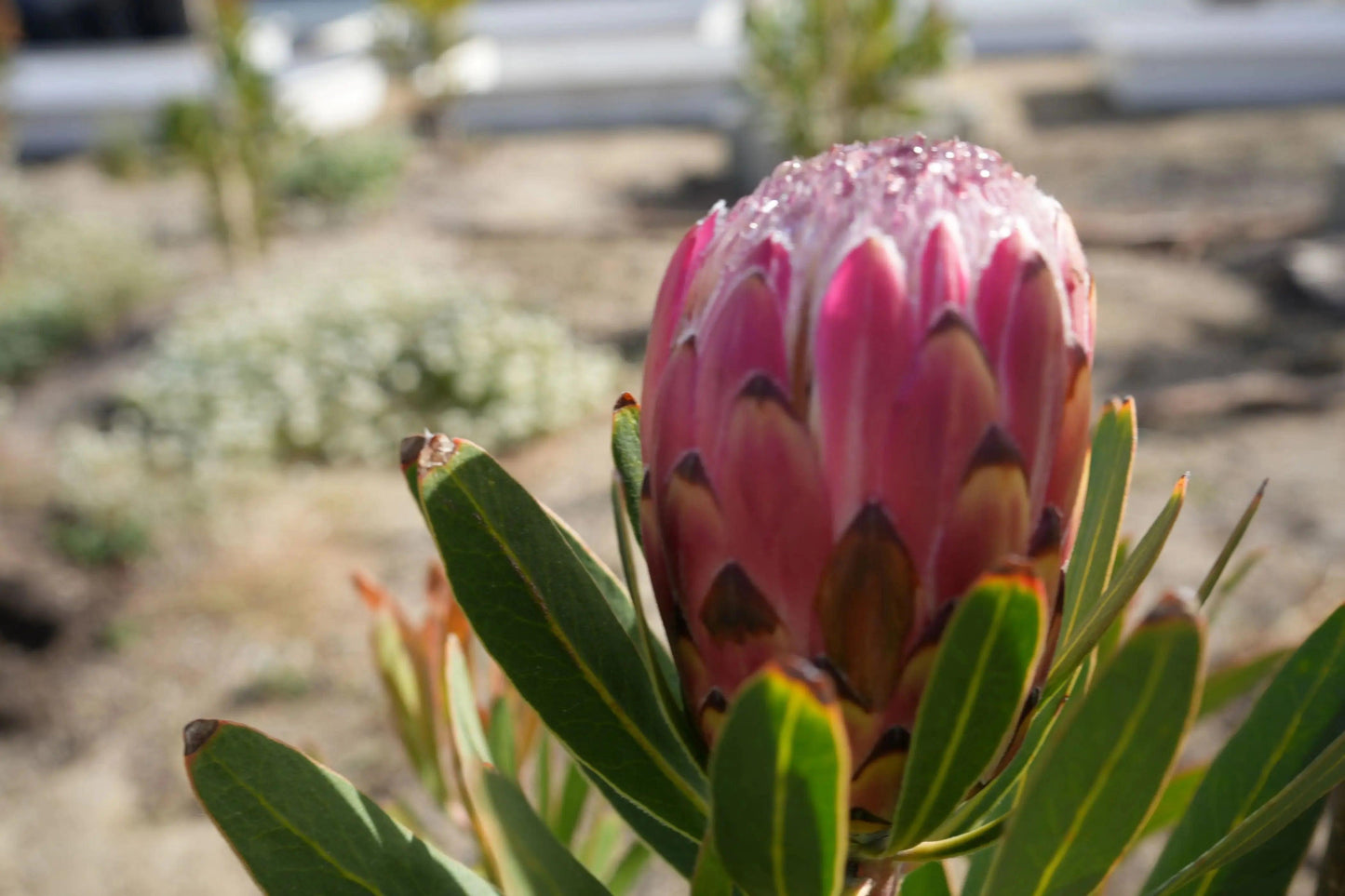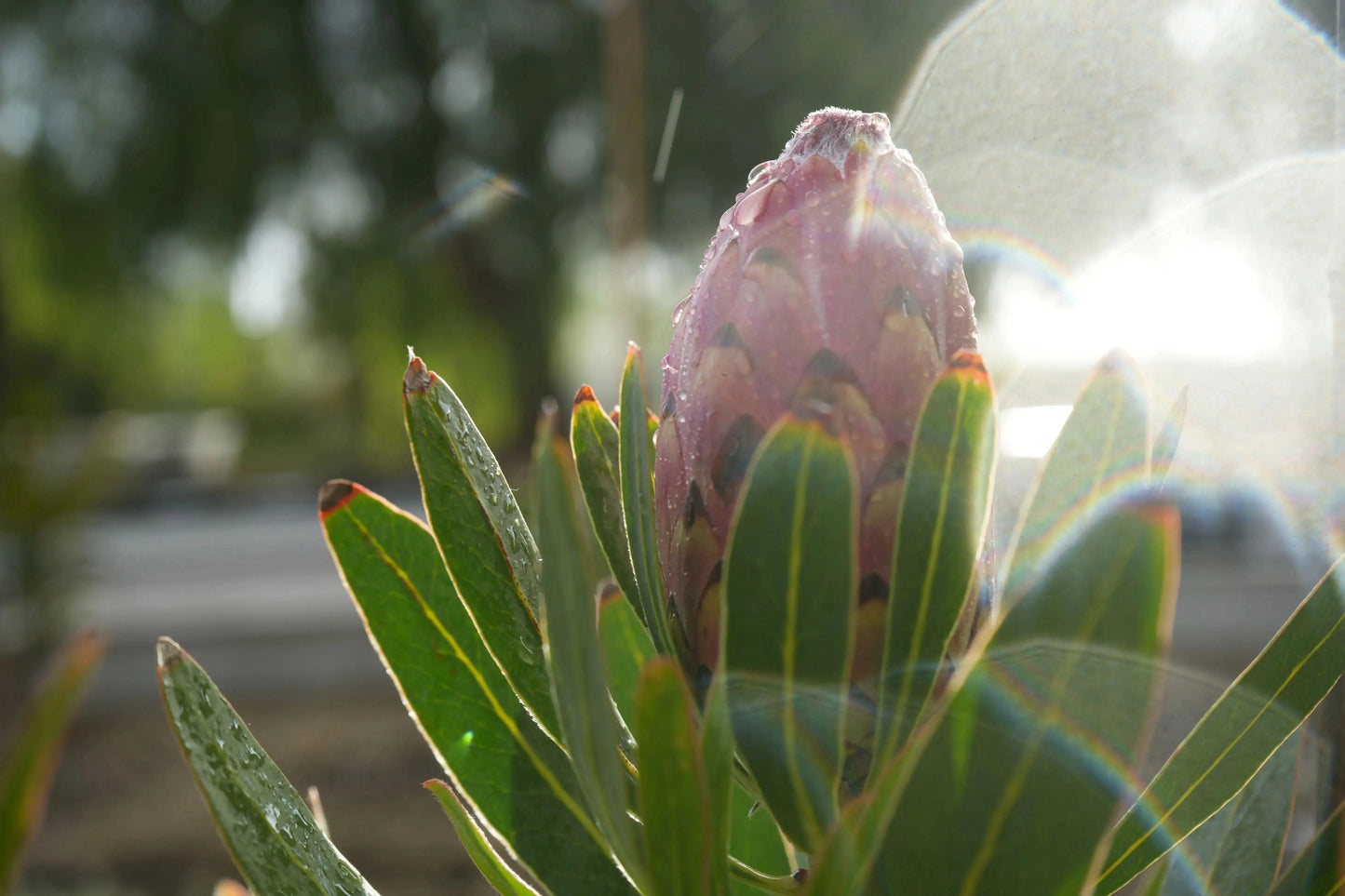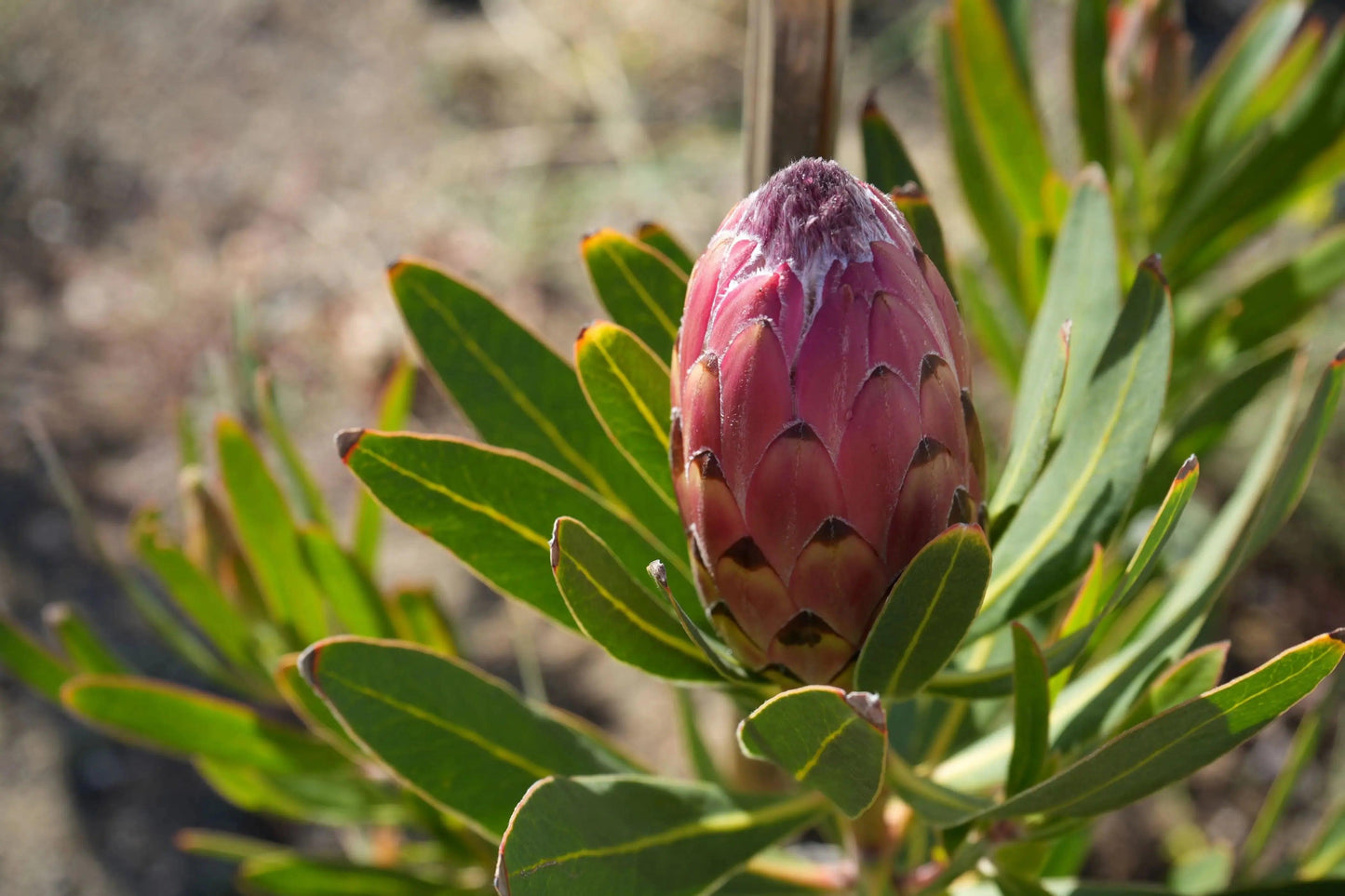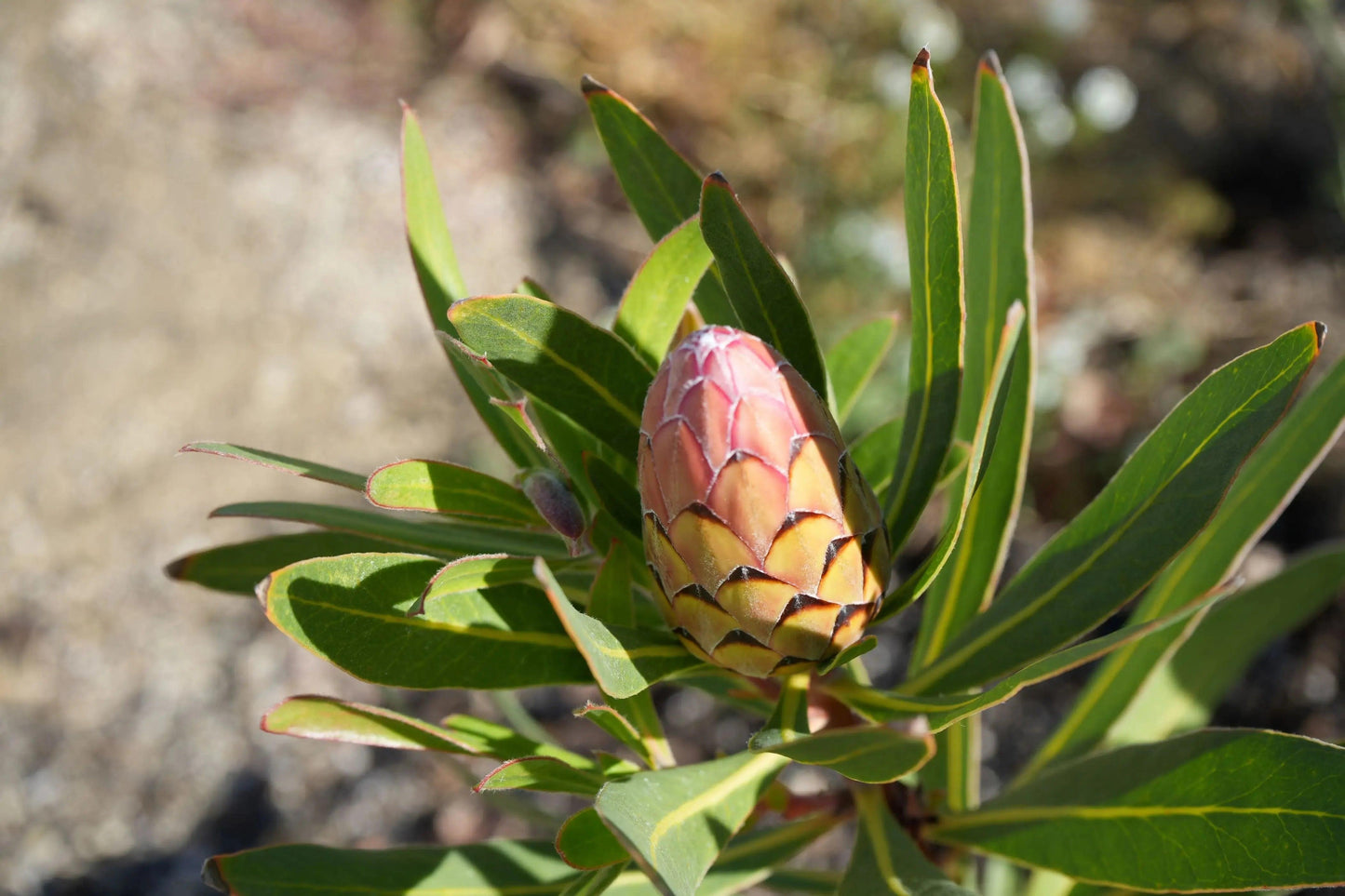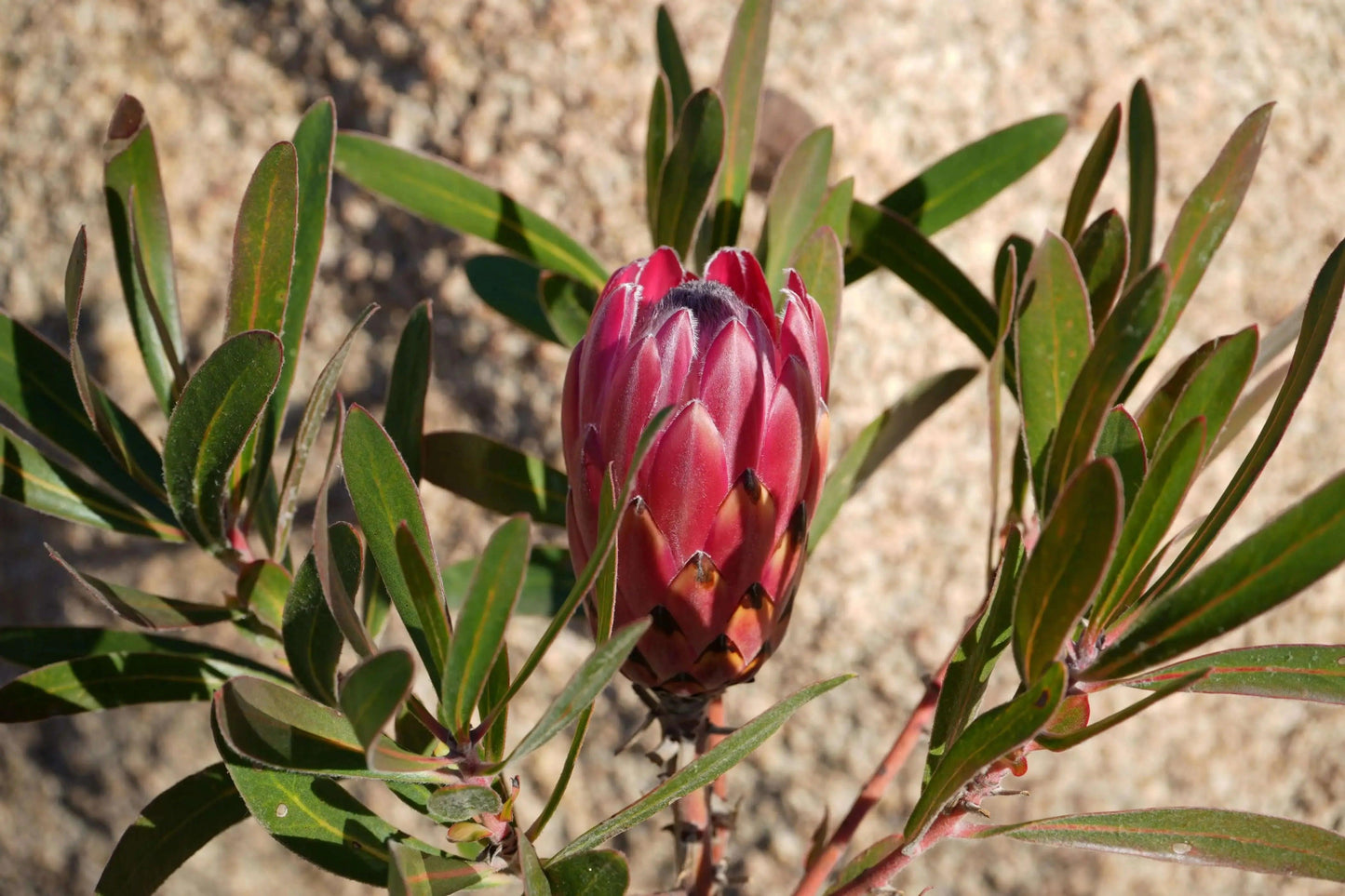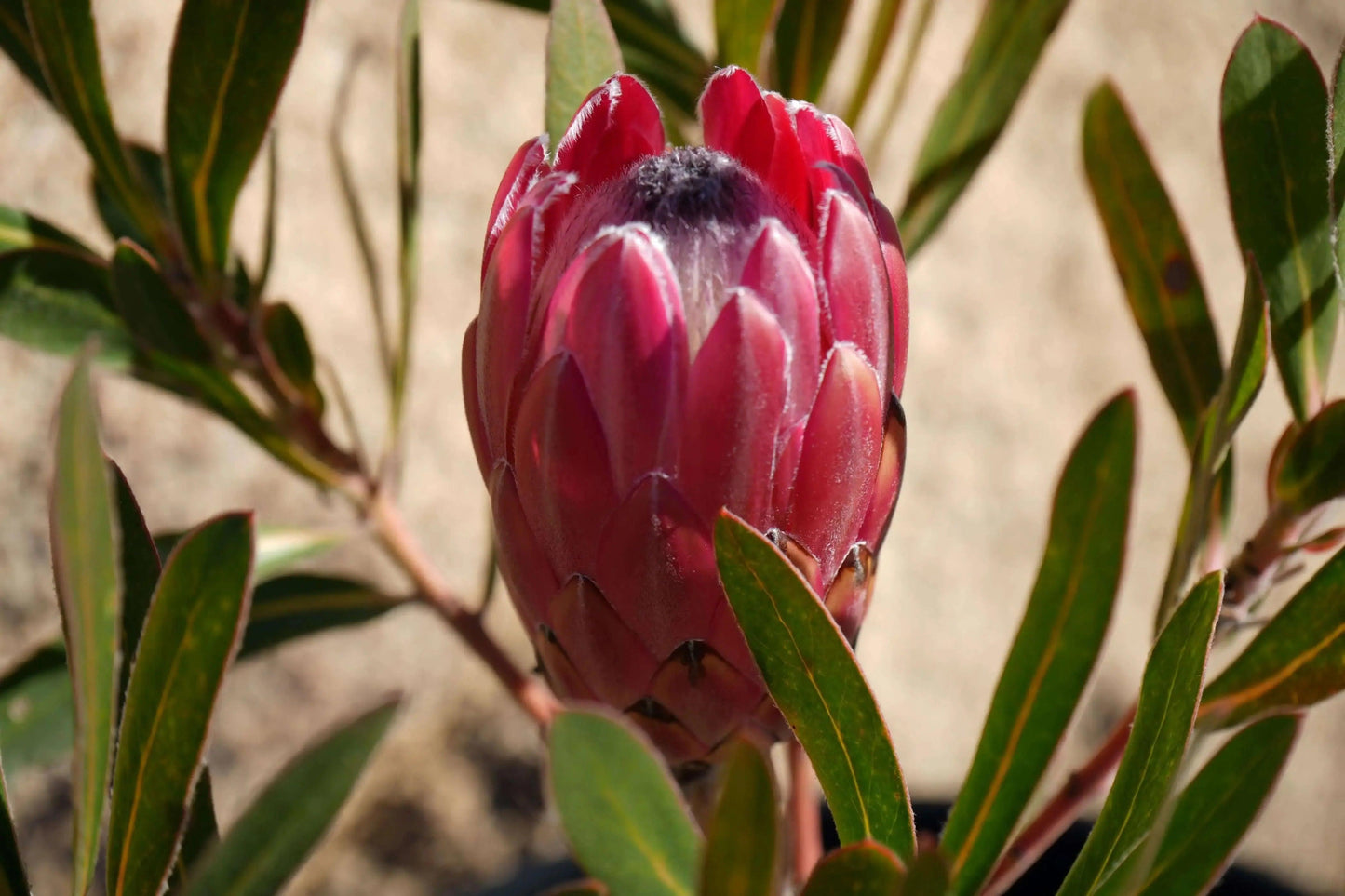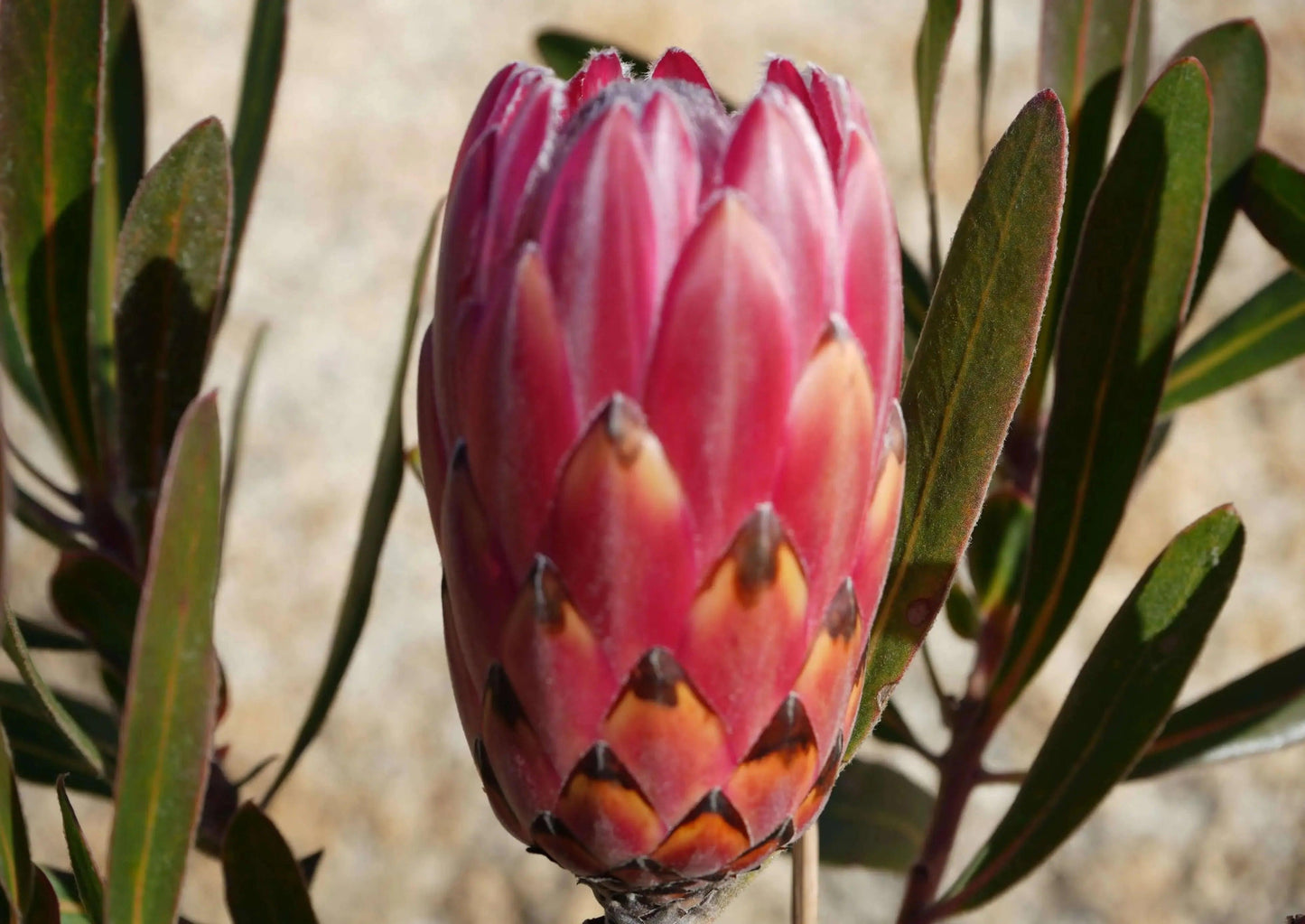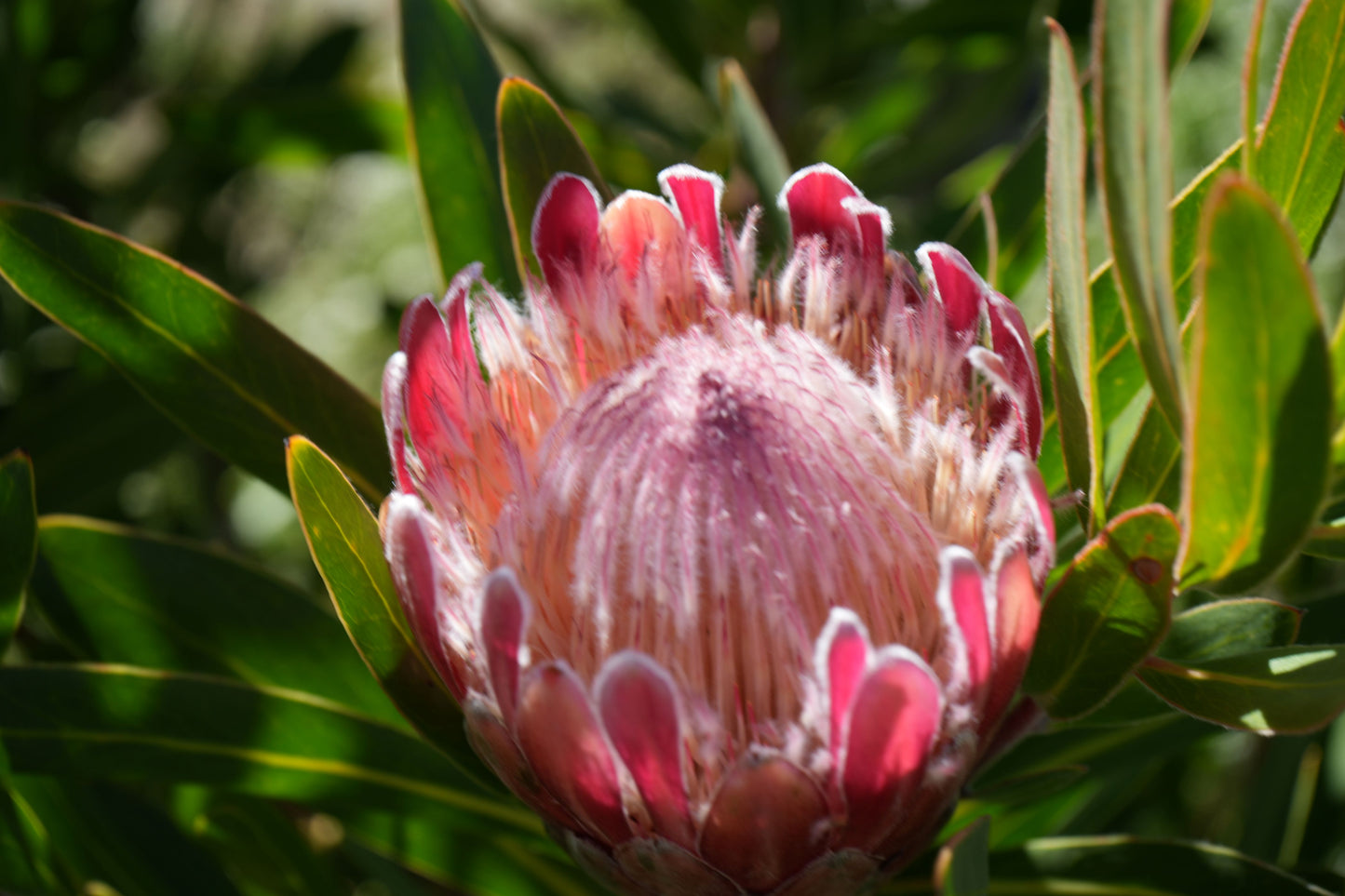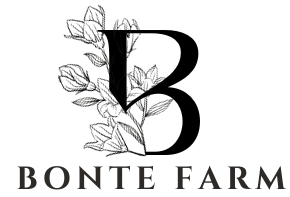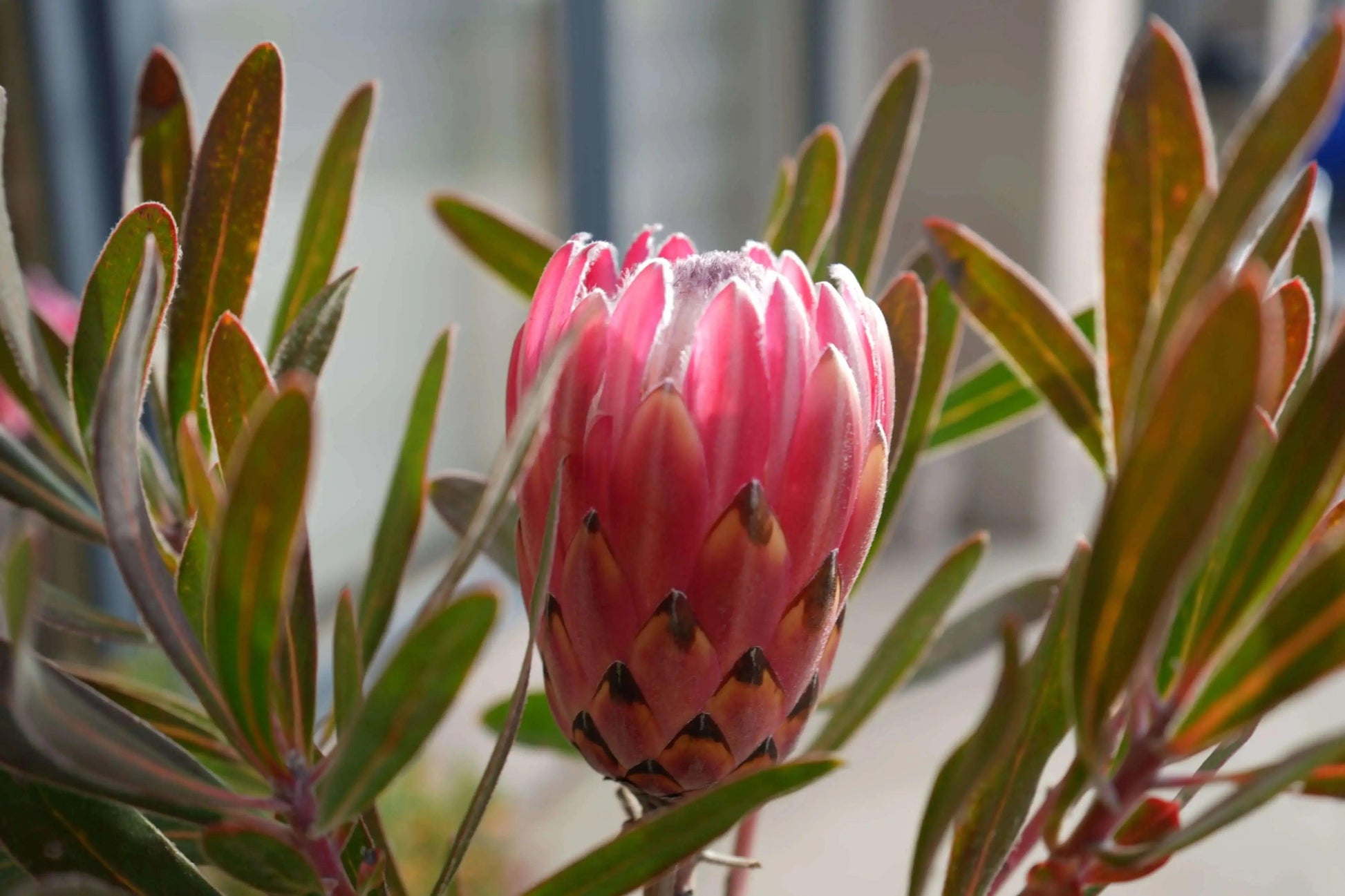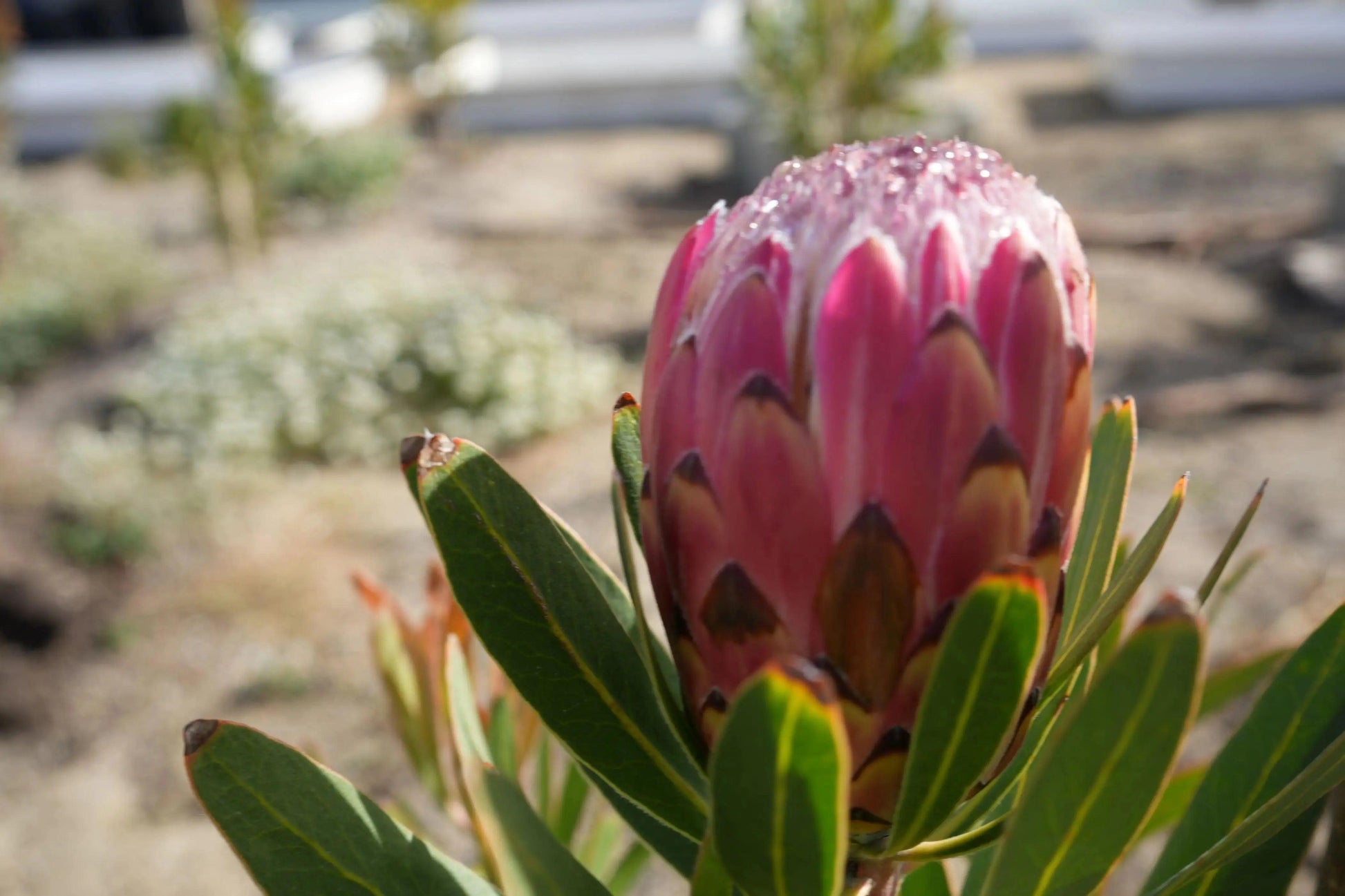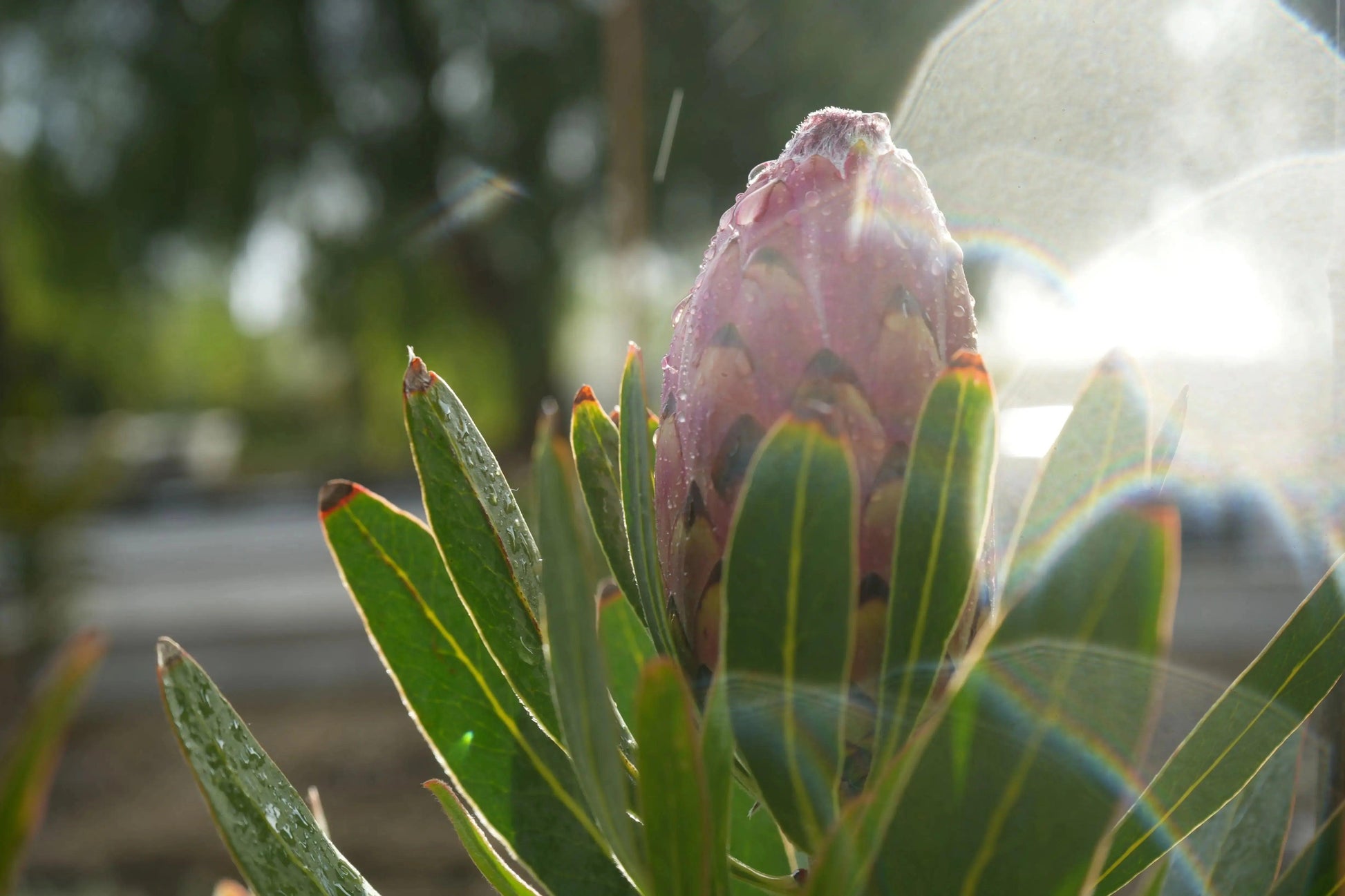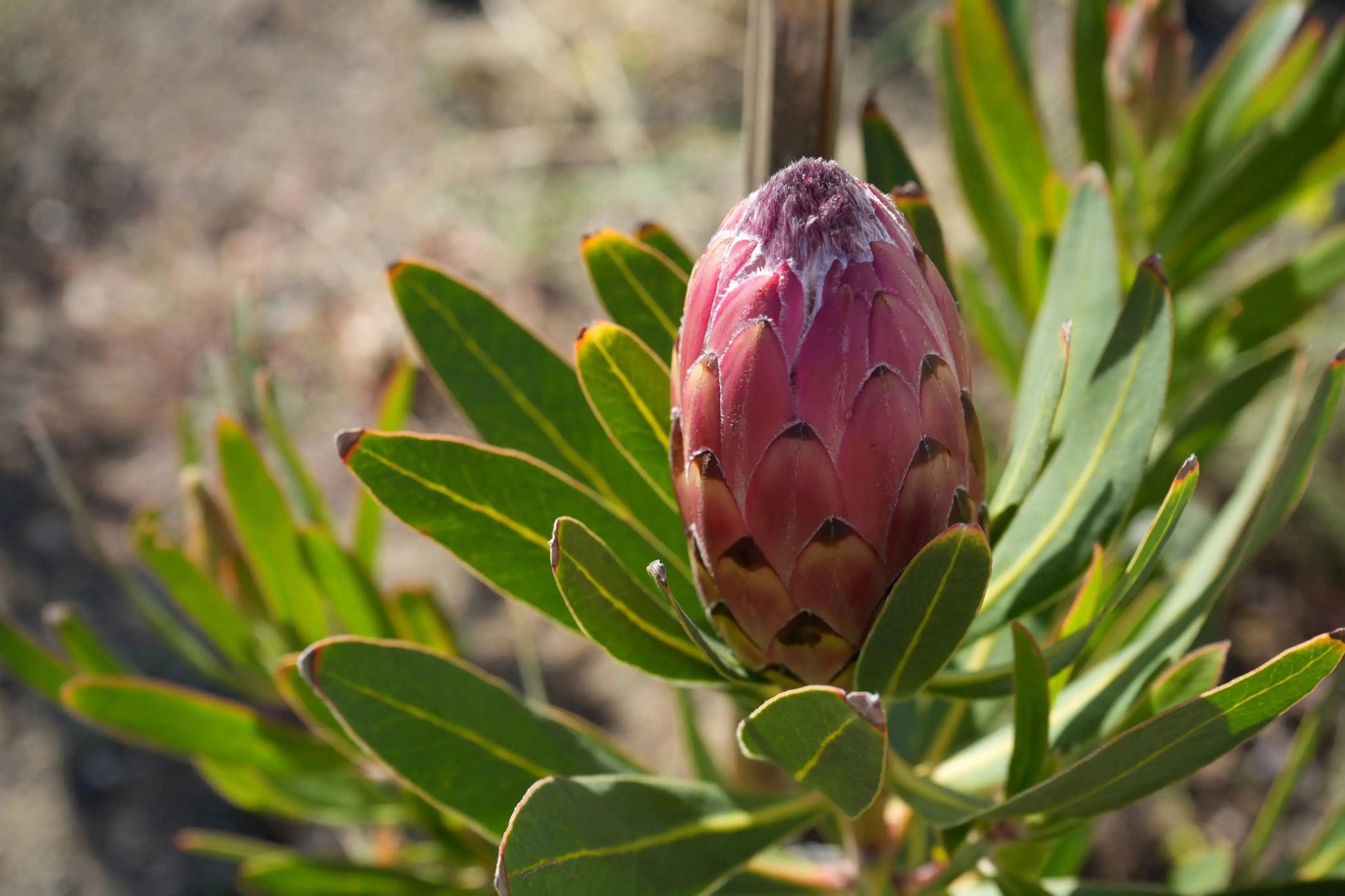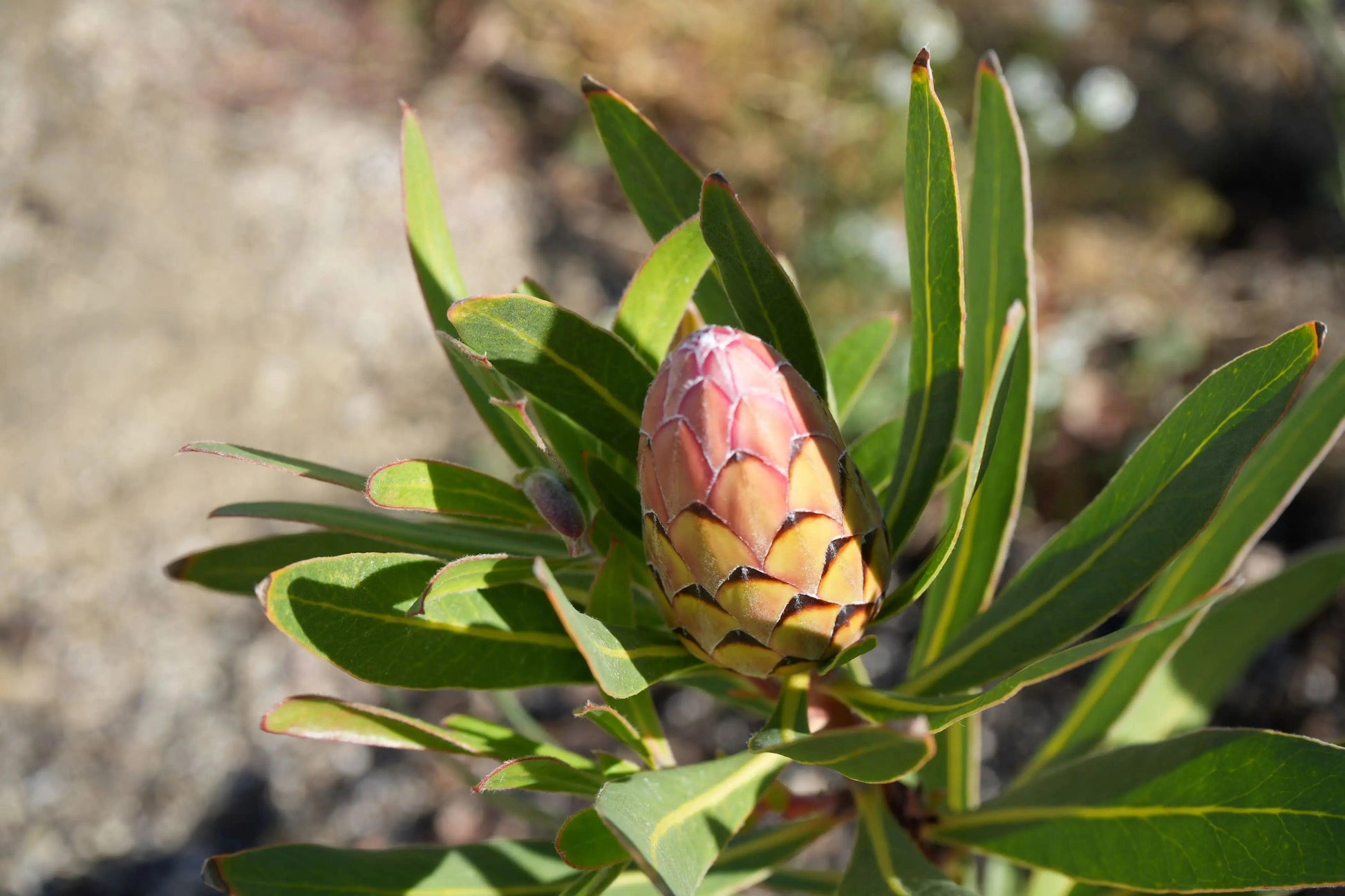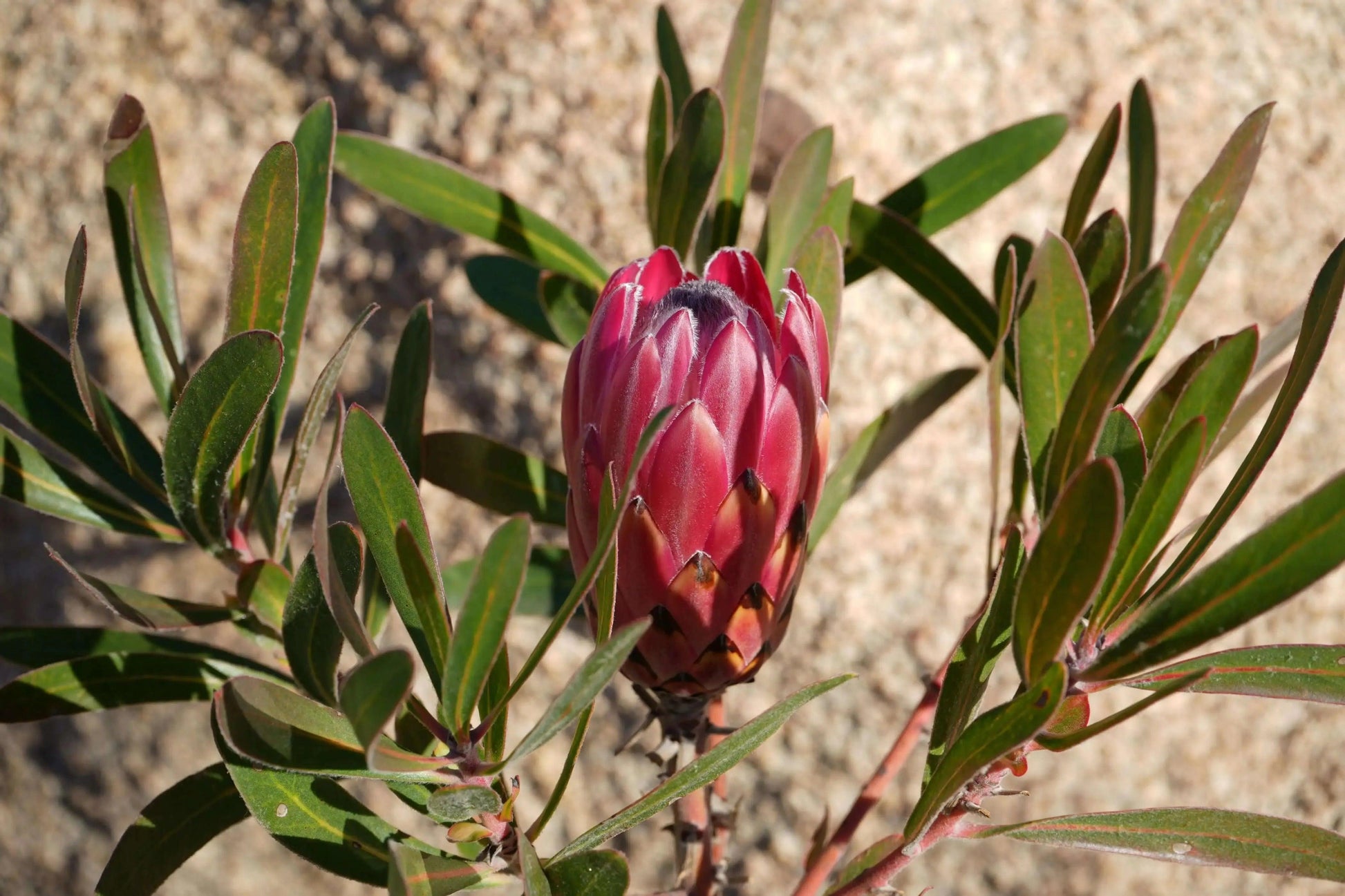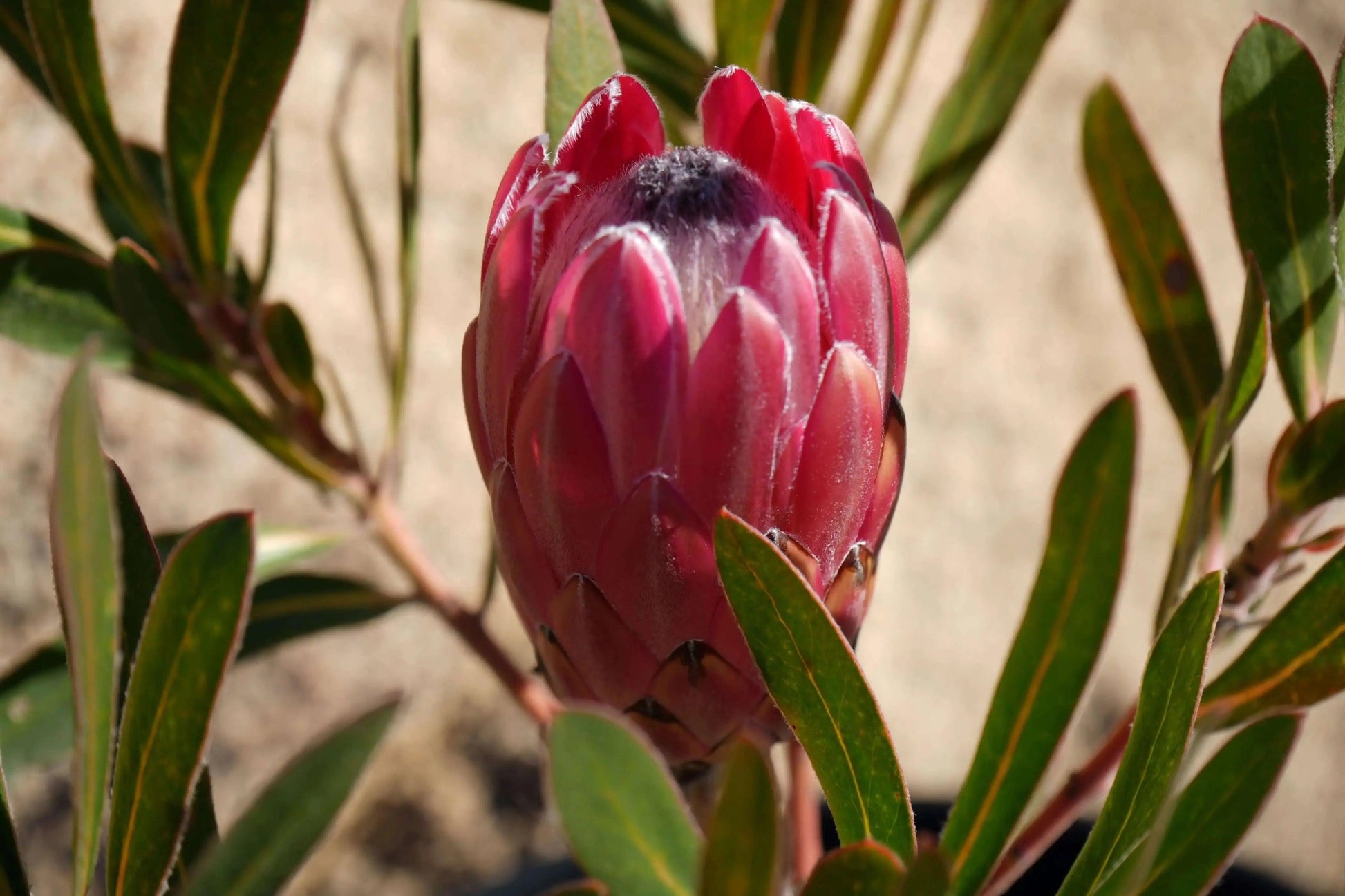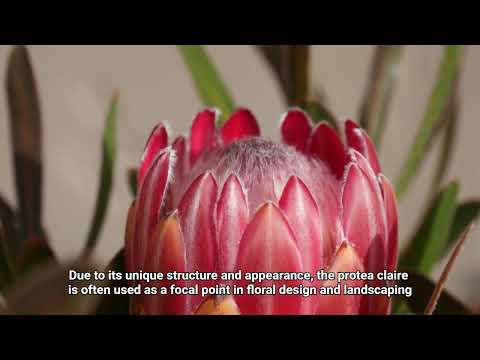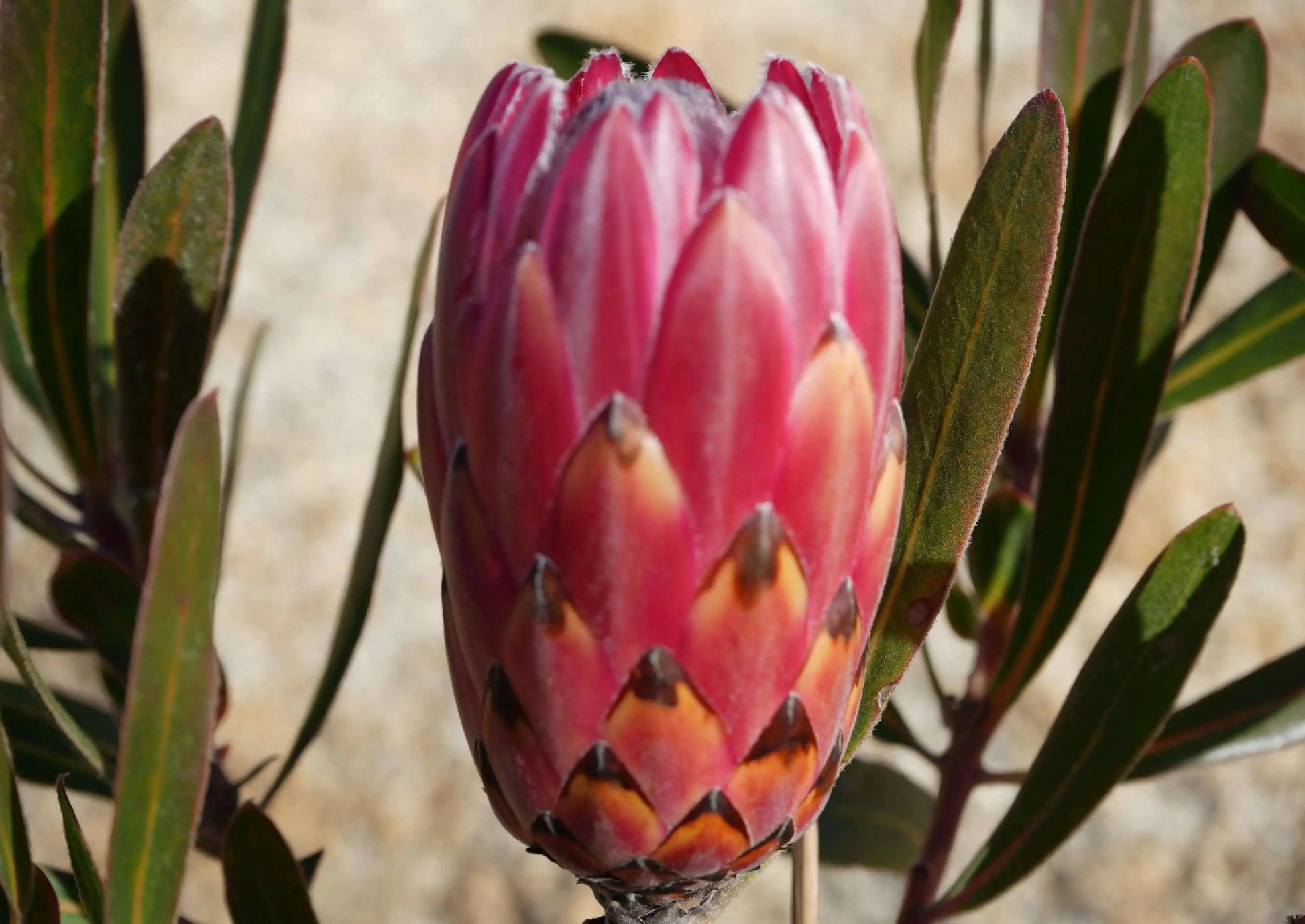Bonte Farm
Protea 'Claire': Cultivate the Exotic Protea Plants in Your Garden
Protea 'Claire': Cultivate the Exotic Protea Plants in Your Garden
Couldn't load pickup availability
🌸 Protea 'Claire': The Elegant, Medium-Sized Pink Cone Protea
The Protea 'Claire' is an exquisite and highly sought-after Protea hybrid prized for its neat, upright growth habit and stunning, elegant blooms. This handsome evergreen shrub produces abundant, perfectly formed, cone-shaped blooms in a beautiful shade of soft, creamy pink that can deepen to rose at the base, often featuring subtle black or white tips. 'Claire' is an excellent specimen plant for creating contrast and vertical interest in Mediterranean and architectural gardens. Its manageable size, superior drought tolerance, and dense foliage make it a resilient and low-maintenance choice, yielding superb, strong-stemmed long-lasting cut flowers and a reliable source of nectar for hummingbirds.
Botanical Characteristics
|
Characteristic |
Detail |
|
Scientific Name |
Protea 'Claire' (Hybrid Cultivar) |
|
Common Names |
Claire Protea, Pink Cone Protea. |
|
Growth Habit |
A sturdy, upright evergreen shrub with a dense, columnar, and naturally neat habit. |
|
Foliage |
Features slender, dark green, needle-like leaves densely packed along the stems, providing a handsome, fine texture. |
|
Flowers |
Medium, unique cone-shaped flower heads (bracts), typically 4–6 inches long. Color is a luminous soft pink blending into a creamy center, often with subtle pink or dark tips. |
|
Flowering Season |
Known for its prolific bloom period, typically flowering heavily from late winter through spring, providing crucial cool-season elegance. |
|
Cut Flower Use |
Excellent long-lasting cut flower, highly valued for its straight stems and elegant color in high-end arrangements. |
Mature Size
'Claire' maintains a manageable, upright size, making it suitable for many garden spaces.
- Height: Typically reaches a slender 5–7 feet (1.5–2.1 meters) tall.
- Spread: Achieves a dense but narrow spread of 3–5 feet (0.9–1.5 meters) wide.
- Its columnar shape is perfect for tight spaces or formal borders.
USDA Hardiness Zone
This Protea hybrid is best suited for USDA Hardiness Zones 9–11. It thrives in mild, nearly frost-free coastal and Mediterranean climates where it receives full sun. It is intolerant of sustained freezing temperatures and requires protection in colder zones.
Cultivation and Care
|
Aspect |
Care Instructions |
|
Sunlight |
Requires full sun (a minimum of 6 hours of direct sun daily) and excellent air circulation to ensure strong vertical growth and abundant blooms. |
|
Soil |
Essential: Demands perfectly well-drained, acidic soil (pH 5.0–6.0). Thrives in sandy, gritty, low-nutrient soils and must not sit in heavy, wet clay. |
|
Water |
Highly drought-tolerant once established. Water deeply during the first year. Mature plants require minimal summer water; overwatering is the primary threat. |
|
Fertilizer |
Crucial: ABSOLUTELY AVOID all phosphorus fertilizers. Proteas are extremely phosphorus-sensitive. Use a specialized, low-phosphorus formula for Proteaceae, or none at all. |
|
Pruning |
Mandatory: The best pruning is achieved by harvesting the flowers heavily, cutting the stems back into the leafy part of the shrub. This promotes fresh, dense growth and high flower production. |
Landscape Use
- Vertical Accent: Used as an upright specimen plant to add height and structure to borders.
- Cut Flower Garden: Grown specifically for its professional-grade, straight, long-lasting floral stems.
- Formal Design: The neat habit is excellent for formal borders and structured plantings.
- Xeriscape Design: A reliable, low-water, low-fertility plant for arid and Mediterranean-style gardens.
Wildlife Attraction
The nectar-filled flowers produce a copious amount of sweet nectar, making them extremely attractive to nectar-feeding birds, which serve as the primary pollinators. Planting 'Claire' is an excellent way to invite hummingbirds and native birds into the cool-season garden.
Pest and Disease Resistance
Protea 'Claire' is generally a hardy and robust plant when its crucial drainage needs are met. The most common issues are root rot and collar rot, which are caused by poor soil drainage or overwatering—this is the single most critical factor to avoid.
Propagation
To ensure the resulting plant maintains the specific, desirable traits, upright habit, and soft pink flower color of the 'Claire' cultivar, propagation must be conducted using vegetative methods. Semi-hardwood cuttings are the preferred and most reliable technique, generally taken during the warmer months. Propagation from seed is not used for maintaining cultivar identity.
Share
